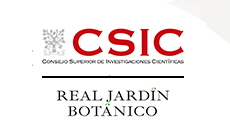Scientific Area
Non-invasive ion flux measurements in plant biology
ID: 613 / 412
Category: Abstract
Track: Pending
Proposed Symposium Title: Non-invasive ion flux measurements in plant biology
Authors:
Sergey Shabala1,2
Affiliations: 1 School of Biological Sciences, University of Western Australia, Australia; 2 International Research Centre for Environmental Membrane Biology, Foshan University, China
Abstract:
Non-invasive microelectrode ion flux measurement (the MIFE) technique is a powerful tool to study membrane-transport processes in living organisms in situ. High spatial (a few microns) and temporal (several seconds) resolution enables real time kinetic studies of membrane transport processes at various levels of organism’s structural organisation, from intact organs to various tissues or single cells and protoplasts derived from these cells. Being non-invasive, the MIFE technique enables long-term (several hours or days) ion flux measurements, even from rapidly moving tissues. Importantly, fluxes of several ions can be measured concurrently, enabling not only quantitative estimates of rates of measured processes, but also providing some valuable information about the stoichiometry between activities of various membrane transporters and their time-dependence. In my talk, I briefly describe the physical principles and a theory behind MIFE measurements and then present a few case studies illustrating applicability of the MIFE technique to study kinetics of ion transport in plants for a range of biological applications. I will then focus on plant systems and show the complex patterns of root nutrient acquisition (ultradian and circadian oscillations; root zone- and tissue-specificity) and link them with root growth, nutation, gravitropism, and plant adaptive responses to environment. I will show how root nutrient acquisition is affected by adverse environmental conditions such as salinity, waterlogging, soil acidity, or nutritional disorders, and provide evidence for roots being able to encode this environmental information by means of ion flux “signatures”. I will then link plant stress tolerance with root’s ability to control net ion fluxes across their membranes and show that intracellular ion homeostasis is critical for determining cell’s fate and is responsible for triggering programmed cell death in plant root tissues.




